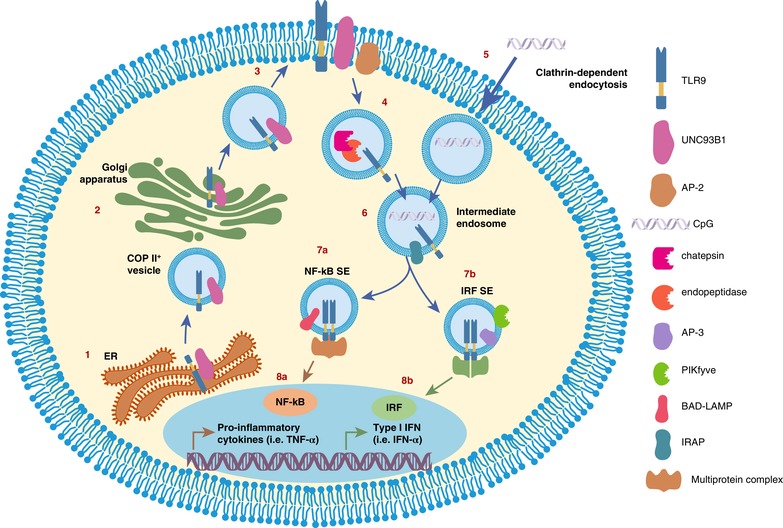Figure 2.

TLR9 intracellular trafficking and pathway. At steady state, TLR9 co‐localizes to the ER with UNC93B1 (1). TLR9 follows the secretory pathway through the Golgi (2) to reach the plasma membrane (3) via COPII+ vesicles. TLR9 is endocytosed in a clathrin‐dependent manner via AP‐2 to enter the endolysosomal system, where acidification of the endosomes allows proteolytic cleavage of TLR9 by cathepsins and endopeptidases (4). In parallel, the TLR9 ligand, CpG, is endocytosed in a clathrin‐dependent manner (5) and meets its cognate receptor (6). Here, the pathway bifurcates. IRAP+ early endosomes carry both TLR9 and CpG, and the presence of this aminopeptidase results in reduced immune activation, as IRAP interacts with actin‐nucleation factors to slow TLR9 trafficking to the late endosomes. In human pDCs, BAD‐LAMP facilitates the trafficking of TLR9 and CpG
